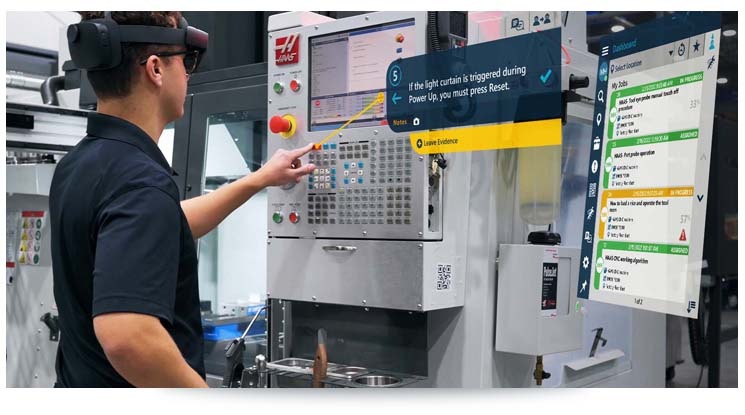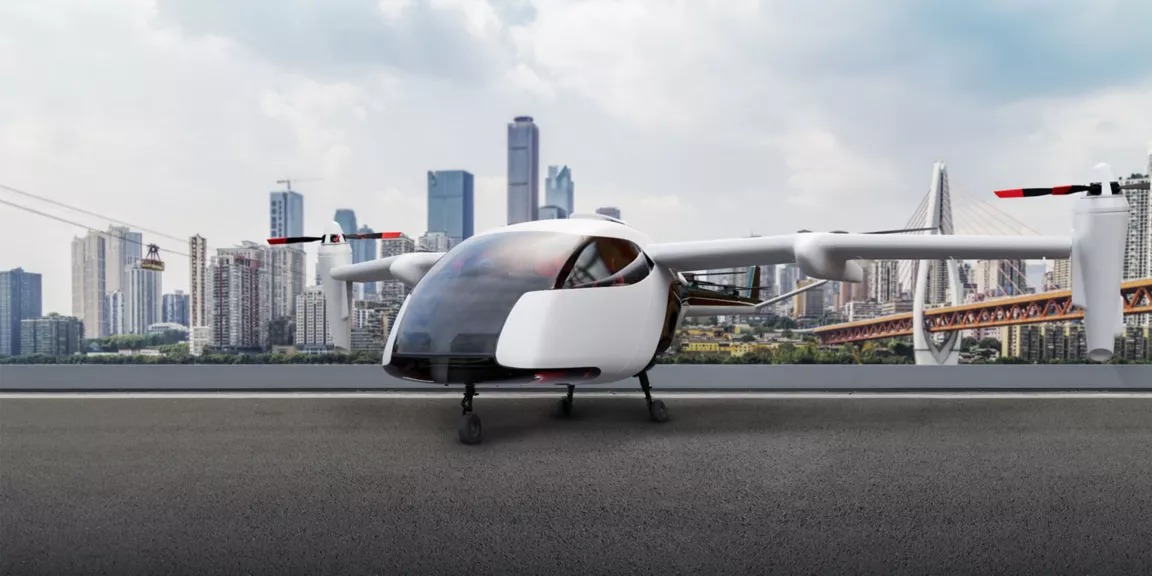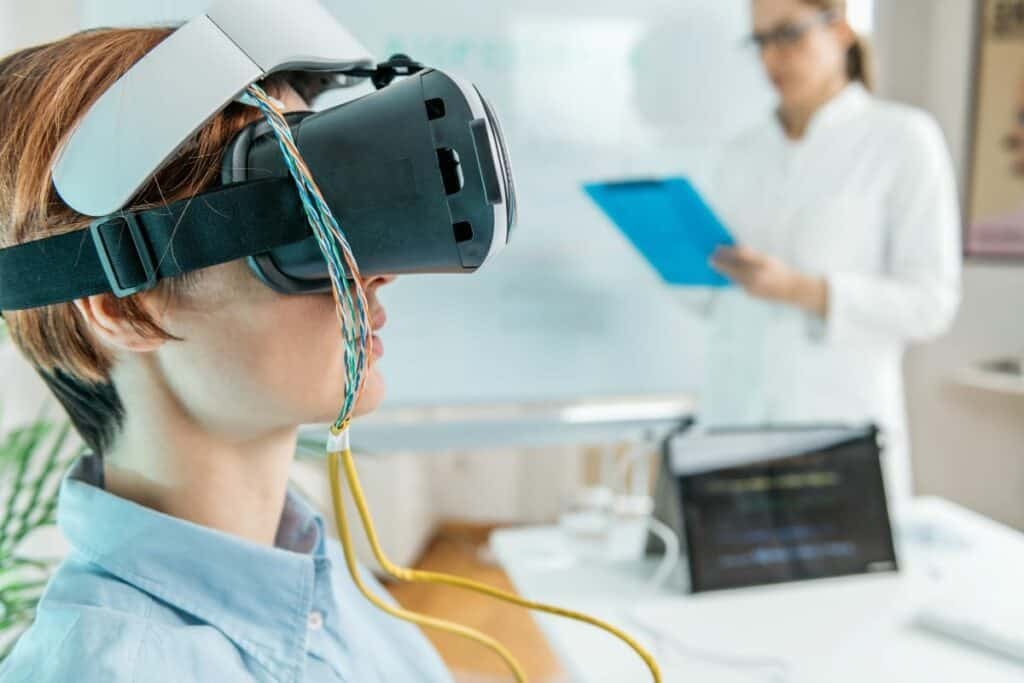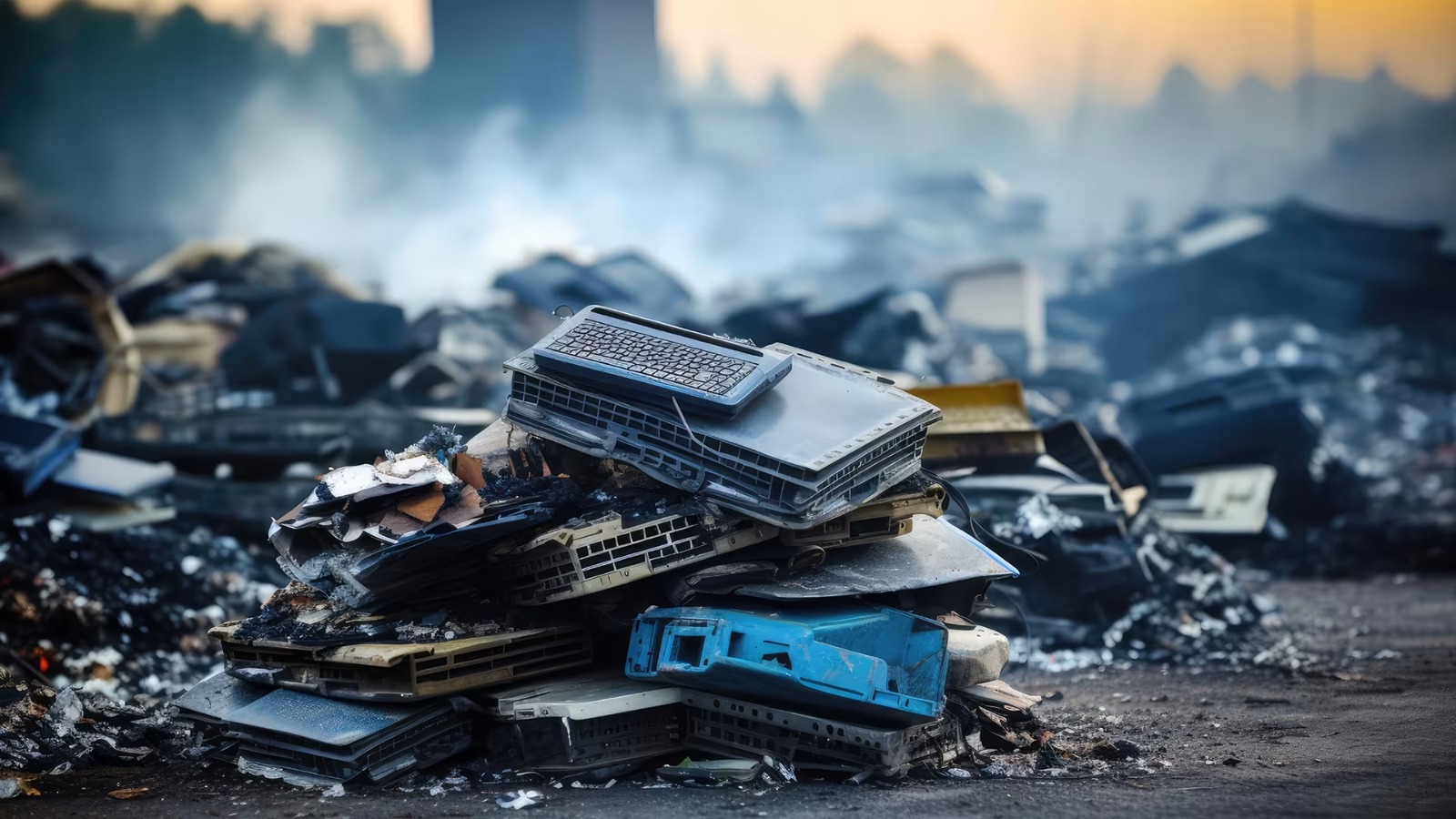
Using AR in industrial maintenance: overlay instructions, remote guidance.
Augmented Reality (AR) is revolutionizing industrial maintenance by providing technicians with real-time digital overlays and interactive guidance, enabling precise step-by-step instructions, live sensor data visualization, and remote expert support. By combining immersive visualization with remote collaboration, AR reduces errors, enhances safety, accelerates task completion, and preserves institutional knowledge, transforming maintenance practices across manufacturing, aerospace, automotive, o
✨ Raghav Jain

Introduction
The industrial sector has always been driven by efficiency, precision, and cost-effectiveness. With global industries becoming more complex and technologically dependent, the need for advanced tools in maintenance, repair, and operational processes has skyrocketed. One such transformative technology is Augmented Reality (AR). AR overlays digital information onto the physical environment, enabling technicians to visualize complex systems, receive real-time guidance, and improve their decision-making during maintenance tasks. Unlike traditional manuals or training modules, AR brings interactive and immersive content directly into the technician’s line of sight, reducing errors, downtime, and training costs.
This article explores how AR is being applied in industrial maintenance, with a special focus on overlay instructions and remote guidance. We will examine its benefits, applications, challenges, and the future roadmap for industries adopting AR-driven solutions.
The Concept of AR in Industrial Maintenance
Augmented Reality combines digital elements (such as 3D models, animations, instructions, or diagrams) with real-world physical objects. In industrial settings, AR tools are often delivered through smart glasses, tablets, or AR headsets. These devices provide workers with contextual data—such as overlaying a machine’s maintenance steps directly onto its real-world counterpart.
Instead of flipping through a manual or trying to memorize procedures, technicians can rely on AR overlays to guide them through each step. Moreover, AR enables remote assistance, where experts from different locations can virtually “see what the worker sees” and provide real-time troubleshooting guidance.
AR Overlay Instructions: A New Way to Work
Traditionally, maintenance workers depended on printed manuals, static diagrams, and years of hands-on experience to handle complex equipment. However, AR overlay instructions are revolutionizing this process in several ways:
- Step-by-Step Digital Guidance
- AR can project visual markers or arrows directly onto machine parts.
- Workers receive stepwise guidance on disassembly, inspection, and reassembly.
- Reduces confusion and speeds up tasks, even for inexperienced workers.
- Interactive 3D Models
- Workers can rotate, zoom, and interact with 3D models of machine components.
- Helps in identifying internal parts that are otherwise invisible without dismantling.
- Error Prevention
- AR systems can highlight correct tools, required torque levels, or parts placement.
- Alerts workers in real time if a step is skipped or incorrectly performed.
- Contextual Data Integration
- Sensors integrated with AR can provide real-time data like pressure, temperature, or performance metrics.
- Workers can compare actual values against recommended operational thresholds instantly.
Remote Guidance: Expert Help Anytime, Anywhere
One of the most powerful AR applications is remote guidance. Industrial companies often operate across multiple sites and countries, making it impractical to station experts everywhere. AR-enabled remote support solves this issue:
- Live Video Collaboration
- Technicians use AR glasses or cameras to stream their field of view to remote experts.
- Experts annotate the live video feed, drawing arrows, highlighting components, or pointing out procedures.
- Reduced Downtime
- Instead of waiting days for experts to travel, remote AR guidance enables immediate problem resolution.
- Saves industries millions by minimizing machine idle time.
- Knowledge Transfer
- Senior experts nearing retirement can mentor junior technicians remotely.
- Helps preserve institutional knowledge and reduces skill gaps.
- Scalable Support
- One expert can guide multiple teams across different sites simultaneously.
- Enhances resource efficiency and reduces operational costs.
Real-World Industrial Applications of AR in Maintenance
- Manufacturing
- Factories use AR to guide workers in assembly line troubleshooting.
- AR assists in predictive maintenance by overlaying sensor data for proactive interventions.
- Energy and Utilities
- In power plants, AR guides workers during inspections of turbines and generators.
- Field technicians in utilities can receive live remote support for repairing power lines.
- Aerospace
- AR instructions help in maintaining aircraft engines, where precision and safety are paramount.
- Boeing and Airbus already use AR for complex wiring installations and engine checks.
- Oil and Gas
- Offshore rigs benefit from AR-enabled maintenance, reducing the need for risky on-site expert visits.
- Remote experts can guide on high-pressure valve repairs in real time.
- Automotive
- Auto manufacturers use AR to train workers on assembling and servicing new vehicle models.
- AR overlays highlight defective parts or suggest optimal repair steps.
Benefits of AR in Industrial Maintenance
- Reduced Training Costs: Workers can learn faster with hands-on AR experiences instead of relying solely on classroom training.
- Fewer Errors: AR’s visual guidance reduces human error in complex repair processes.
- Enhanced Safety: AR highlights hazardous areas or provides safety alerts, reducing accidents.
- Efficiency Gains: Tasks are completed faster with higher accuracy.
- Improved Documentation: Maintenance processes can be recorded for compliance and auditing.
- Global Collaboration: Experts can support multiple sites remotely.
Challenges and Limitations of AR in Maintenance
While AR has immense potential, its adoption faces several challenges:
- Hardware Costs: AR glasses and headsets are still expensive for large-scale deployment.
- Connectivity Issues: Remote AR guidance requires strong, reliable internet, which may be difficult in remote locations.
- Integration Complexity: Linking AR systems with legacy equipment and databases requires significant investment.
- User Adoption: Older technicians may resist new technologies, preferring traditional methods.
- Data Security: AR systems rely on cloud-based data transfer, which can pose cybersecurity risks.
The Future of AR in Industrial Maintenance
The next decade will likely see AR becoming a standard tool in industrial operations. Some expected advancements include:
- 5G Integration: Ultra-low latency networks will enhance AR remote guidance.
- AI-Driven AR: Machine learning algorithms will predict failures and automatically overlay repair instructions.
- Digital Twins: AR will integrate with digital twins of equipment, offering predictive and real-time insights.
- Wearable Advancements: AR glasses will become lighter, cheaper, and more ergonomic.
- Full Automation Assistance: AR may one day work alongside robots, coordinating human and machine maintenance teams.
Augmented Reality (AR) is rapidly transforming industrial maintenance by overlaying digital information onto the real world and providing technicians with step-by-step instructions, real-time data, and expert remote guidance that drastically improve accuracy, efficiency, and safety in complex industrial tasks; unlike traditional methods that relied on printed manuals, static diagrams, and years of hands-on experience, AR allows workers to visualize 3D models of machinery, follow animated assembly or disassembly instructions directly projected on components, and even receive live annotations from experts thousands of miles away, making it one of the most powerful tools in modern industry; in the context of overlay instructions, AR can highlight machine parts, show arrows pointing to bolts that need loosening, warn against incorrect procedures, or provide torque specifications in real time, while also integrating with IoT sensors to show live performance metrics such as pressure, temperature, and vibration, enabling predictive maintenance before breakdowns occur, and significantly reducing human error and downtime; with remote guidance, AR allows field technicians to wear smart glasses or use AR-enabled tablets to stream their perspective to remote experts, who can then annotate the live feed by drawing arrows, circling problem areas, or displaying instructions directly into the worker’s field of view, eliminating the need for costly and time-consuming expert travel while also enabling global collaboration and mentoring between experienced engineers and less-experienced workers; practical applications span across industries such as manufacturing, where AR guides technicians through machine troubleshooting on production lines; aerospace, where companies like Boeing and Airbus use AR to maintain aircraft engines and wiring systems with extreme precision; automotive, where workers are trained to assemble and service new models faster; oil and gas, where AR reduces the need for experts to travel to dangerous offshore rigs by offering remote support; and utilities, where field technicians repairing power lines or turbines can access live expert guidance instantly; the benefits of AR in industrial maintenance are vast, including reduced training costs since workers can learn faster with immersive AR environments, fewer errors because instructions are visual and interactive, enhanced safety as AR can highlight hazardous zones or dangerous components, improved documentation since maintenance tasks can be recorded for compliance, efficiency gains because tasks are completed quicker with fewer mistakes, and better knowledge transfer as senior experts nearing retirement can mentor juniors remotely, ensuring institutional knowledge is preserved; however, AR adoption is not without challenges, including high hardware costs for advanced AR headsets and smart glasses, connectivity limitations in remote or offshore sites where stable internet is hard to maintain, integration complexities with legacy equipment and databases, resistance from older technicians who prefer traditional methods, and cybersecurity risks since AR systems often rely on cloud data transfer; despite these hurdles, the future of AR in maintenance looks promising, as advancements in 5G networks will provide ultra-low latency connections for seamless remote support, artificial intelligence will integrate with AR to predict failures and automatically suggest repair steps, digital twins will merge with AR to create real-time virtual replicas of machines that provide predictive insights, AR glasses will become lighter, more affordable, and ergonomically suitable for long-term use, and eventually AR may work alongside robotics to create hybrid human-machine maintenance systems; overall, AR is not just a futuristic concept but a practical, game-changing tool already being applied across multiple industries to improve maintenance speed, safety, and reliability, and as these technologies mature, AR is poised to become an indispensable part of industrial operations globally, reshaping how maintenance is conducted and ensuring higher productivity standards across sectors.
Augmented Reality (AR) is rapidly transforming industrial maintenance by providing technicians with immersive, real-time, and context-aware guidance that overlays digital information directly onto physical equipment, allowing workers to visualize complex machinery, follow step-by-step instructions, and access remote expertise, making maintenance processes more efficient, accurate, and safe than ever before; traditionally, maintenance relied on static manuals, printed schematics, and the experience of highly trained personnel, which often led to human error, longer downtime, and higher operational costs, but with AR, digital overlays can highlight components, indicate the correct tools, show torque values, and even alert technicians to safety hazards in real time, while integrating with IoT sensors and machine data to provide live operational metrics such as temperature, pressure, vibration, or performance trends, enabling predictive maintenance and preventing catastrophic equipment failures; AR-based overlay instructions allow technicians to see 3D models of machinery, rotate and examine internal parts virtually, and receive animated guidance for assembly, disassembly, or calibration tasks, reducing errors and the need for extensive prior training, which is particularly valuable for new hires or temporary workers who may lack experience with complex industrial systems; in addition to enhancing on-site maintenance, AR facilitates remote guidance, where technicians equipped with AR glasses or tablets can stream their field of view to experts located anywhere in the world, allowing these specialists to annotate the feed with arrows, diagrams, or step-by-step instructions, effectively bridging the gap between novice operators and highly experienced personnel, enabling real-time problem-solving, rapid troubleshooting, and knowledge transfer, which is especially crucial in industries where machinery is highly specialized or located in remote or hazardous environments; industries across sectors are leveraging AR for these capabilities: in manufacturing, AR guides workers along production lines, assists in troubleshooting machinery, and helps with precision assembly; in aerospace, companies like Boeing and Airbus utilize AR for engine maintenance, wiring installation, and system diagnostics, where precision is critical and errors can have serious consequences; in automotive, AR aids in training staff on new vehicle models, streamlines quality checks, and highlights faulty components during inspections; in oil and gas, AR reduces the risk of accidents by allowing offshore rig technicians to receive remote expert guidance for high-pressure systems and complex repairs without waiting for specialists to travel to the site; and in utilities, field engineers repairing turbines, generators, or power lines can immediately access remote guidance and digital overlays, improving repair speed and safety while reducing downtime; the benefits of AR in industrial maintenance are extensive, including reduced training costs as workers learn faster with immersive visual guidance, fewer operational errors due to stepwise instructions and interactive overlays, enhanced safety through real-time hazard identification, improved documentation and compliance via digital records of maintenance procedures, efficiency gains from faster completion of tasks, and the preservation of organizational knowledge by allowing senior experts to mentor remotely, thus bridging generational skill gaps; however, the adoption of AR also faces challenges such as high initial hardware costs for AR headsets or smart glasses, potential connectivity issues in remote or offshore environments, integration complexities with legacy systems or existing ERP and maintenance databases, resistance from workers accustomed to traditional methods, and cybersecurity risks associated with cloud-based data transfer and live video streams; despite these challenges, the future of AR in industrial maintenance is highly promising, with advancements such as 5G networks providing ultra-low latency for smoother remote guidance, artificial intelligence integration enabling predictive maintenance and context-aware step suggestions, digital twins combining with AR for real-time monitoring and simulation of equipment behavior, lighter and more affordable wearable devices improving usability, and the potential for AR to coordinate with robotic assistants to create hybrid human-machine maintenance teams, ultimately transforming industrial operations by reducing downtime, improving efficiency, minimizing errors, and significantly enhancing worker safety; as industries increasingly adopt AR, they can expect measurable returns in productivity, maintenance speed, operational safety, and workforce capability, positioning AR not merely as a technological novelty but as a critical enabler of modern industrial strategy, capable of reshaping how complex machinery is maintained, monitored, and optimized across sectors, from manufacturing floors and automotive assembly lines to power plants, offshore rigs, and aerospace facilities, while also creating new standards for global collaboration, training, and process automation; in conclusion, AR represents a paradigm shift in industrial maintenance, merging real-world tasks with digital intelligence to empower workers with real-time data, visual guidance, and remote expertise, effectively reducing errors, downtime, and costs, preserving critical knowledge, and enabling a safer, faster, and more efficient approach to maintaining the complex industrial machinery that underpins modern economies.
Conclusion
Augmented Reality is no longer a futuristic concept—it is a practical tool transforming industrial maintenance today. Through overlay instructions, AR guides technicians with precision, efficiency, and safety. Remote guidance further extends its value, allowing experts to assist workers across geographies without costly delays.
Although challenges such as high hardware costs, training, and connectivity persist, the long-term benefits outweigh these barriers. Industries adopting AR can expect improved efficiency, reduced downtime, and better-trained staff. As technologies like AI, digital twins, and 5G evolve, AR will only become more powerful and indispensable in industrial maintenance.
In conclusion, AR represents a paradigm shift in how industries maintain and repair equipment—bridging knowledge gaps, enhancing collaboration, and ensuring higher safety and productivity standards.
Q&A Section
Q1:- What is AR in industrial maintenance?
Ans:- AR in industrial maintenance refers to using augmented reality devices like smart glasses or tablets to overlay digital instructions, diagrams, and real-time data onto physical machines, guiding technicians during repairs and inspections.
Q2:- How do AR overlay instructions help technicians?
Ans:- AR overlay instructions provide step-by-step visual guidance directly on equipment, reducing errors, enhancing efficiency, and allowing even less-experienced technicians to perform complex maintenance tasks accurately.
Q3:- What is AR remote guidance?
Ans:- AR remote guidance allows experts to view a technician’s workspace through live video streaming and provide real-time annotated support, eliminating the need for on-site travel.
Q4:- Which industries benefit most from AR maintenance?
Ans:- Aerospace, manufacturing, automotive, oil & gas, and utilities benefit significantly from AR maintenance due to their reliance on complex equipment and the high costs of downtime.
Q5:- What are the challenges of using AR in maintenance?
Ans:- The main challenges include high hardware costs, the need for reliable internet, difficulties in integrating AR with existing systems, user resistance, and potential cybersecurity risks.
Similar Articles
Find more relatable content in similar Articles

3D-Printed Organs: Are We Clos..
3D-printed organs are at the f.. Read More

The Future of Electric Planes ..
The aviation industry is under.. Read More

Virtual Reality Therapy: Heali..
Virtual Reality Therapy (VRT) .. Read More

E-Waste Crisis: The Race to Bu..
The rapid growth of electronic.. Read More
Explore Other Categories
Explore many different categories of articles ranging from Gadgets to Security
Smart Devices, Gear & Innovations
Discover in-depth reviews, hands-on experiences, and expert insights on the newest gadgets—from smartphones to smartwatches, headphones, wearables, and everything in between. Stay ahead with the latest in tech gear
Apps That Power Your World
Explore essential mobile and desktop applications across all platforms. From productivity boosters to creative tools, we cover updates, recommendations, and how-tos to make your digital life easier and more efficient.
Tomorrow's Technology, Today's Insights
Dive into the world of emerging technologies, AI breakthroughs, space tech, robotics, and innovations shaping the future. Stay informed on what's next in the evolution of science and technology.
Protecting You in a Digital Age
Learn how to secure your data, protect your privacy, and understand the latest in online threats. We break down complex cybersecurity topics into practical advice for everyday users and professionals alike.
© 2025 Copyrights by rTechnology. All Rights Reserved.